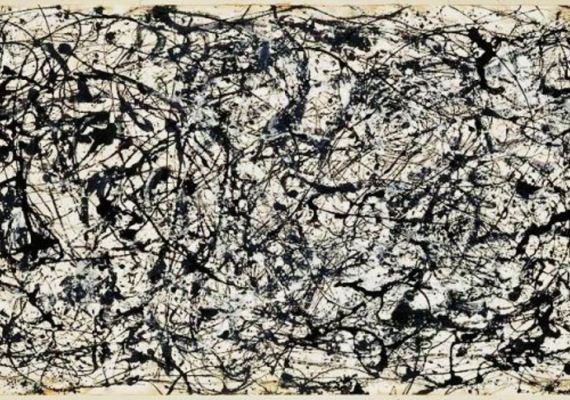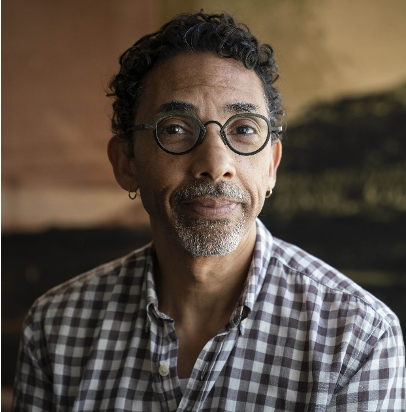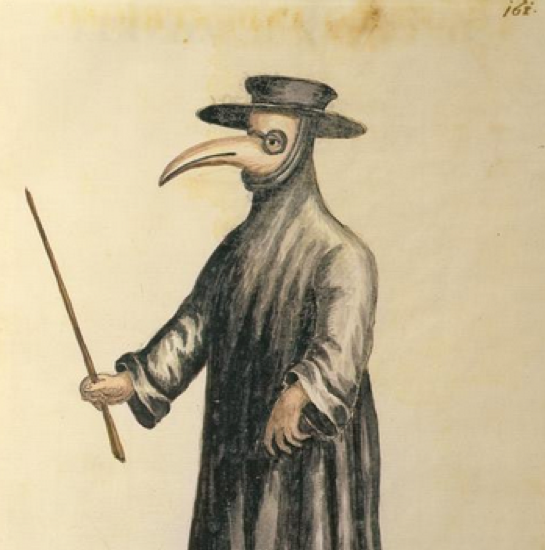Knowing the Victim? Reflections on Empathy, Analogy, and Voice from the Shoah to the Present
The Holocaust and the BLM movement share the problem of knowing another’s experience. Judith Butler, Cheryl Greenberg, Marianne Hirsch, and Robin D. G. Kelley tackle the core epistemological and moral question of whether we can know another’s experience, and what is at stake in our answer.

One of the core questions of the humanities is how can we know what we know. In the field of Jewish studies, one of the sharpest formulations of this fundamental epistemological question arises in the study of the Holocaust. Is it the case, as Elie Wiesel famously declared, that only survivors can really know what took place in concentration and death camps? Some scholars have flipped this question and asked whether survivor testimony can be deemed sufficiently reliable for historical reconstruction, especially on its own. And the overarching question of whether the Holocaust exceeds “the limits of representation” has been a central question in the field and beyond for decades.
These questions about knowability have powerful echoes today. The protest movement following the murder of George Floyd has focused attention on the deep structure of racial inequality in the United States. It also raises questions about what those who are not African American can know—and thus should say—about the lived experience of racism. Is it possible or rather presumptuous to “know” the experience of another? Is it, as Emanuel Levinas or Edith Wyschograd might argue, a moral obligation to do so? Can or should we draw on analogy to help us understand and empathize?
This set of epistemological challenges, familiar to us from the Holocaust and post-Holocaust reflection, has returned with great urgency today. As part of the new online forum that arose in the midst of the Coronavirus pandemic, JQR invited distinguished scholars of history, literature, and philosophy to reflect on the issue. The result is a nuanced and provocative series of responses situated in the midst of one of the most impassioned and engaged intellectual conversations in decades.
***
Judith Butler
Maxine Elliot Professor of Comparative Literature, University of California Berkeley
 What can Ashkenazim know about Black experience? What should we seek to know? The form of these questions has everything to do with the kind of answers that are expected. The answers would be quite different if the question were: what is it we already know, and how has proximity conditioned our knowing? And though I think the question should be shifted, it is not easy to do with a flick of the keyboard. The first questions weigh heavily because of two quite distinct burdens imposed upon knowing. The first is whether the Holocaust exceeds the limits of representation, a claim that tends, oddly, to draw upon Kant as well as the ban on iconographic depictions of God that we find in Jewish law. Odd since the Holocaust is surely neither a sacred thing (though the forms of remembrance may well be) nor an instance of the aesthetic sublime (despite Agamben’s outrageous claim). The argument proffered differently by Felman and Caruth was that the Holocaust could not be grasped by any representation. That implies two consequences: the first is that there will always be more than one possible representation; the second is that whatever kind of knowing we seek will not be a way of grasping or capturing the phenomenon. That leaves open the possibility of knowing in a way that does not seek to capture, that is, that preserves alterity even as it knows.
What can Ashkenazim know about Black experience? What should we seek to know? The form of these questions has everything to do with the kind of answers that are expected. The answers would be quite different if the question were: what is it we already know, and how has proximity conditioned our knowing? And though I think the question should be shifted, it is not easy to do with a flick of the keyboard. The first questions weigh heavily because of two quite distinct burdens imposed upon knowing. The first is whether the Holocaust exceeds the limits of representation, a claim that tends, oddly, to draw upon Kant as well as the ban on iconographic depictions of God that we find in Jewish law. Odd since the Holocaust is surely neither a sacred thing (though the forms of remembrance may well be) nor an instance of the aesthetic sublime (despite Agamben’s outrageous claim). The argument proffered differently by Felman and Caruth was that the Holocaust could not be grasped by any representation. That implies two consequences: the first is that there will always be more than one possible representation; the second is that whatever kind of knowing we seek will not be a way of grasping or capturing the phenomenon. That leaves open the possibility of knowing in a way that does not seek to capture, that is, that preserves alterity even as it knows.
The other source of our epistemological reticence is identity politics based on experiential claims. According to that view, one can only truly know one’s own experience, or the experience of others who have shared the same social history or experienced the same kind of discrimination, harm, and exclusion. To the extent that this identitarian view relies on experiential claims, it does not always ask about how a sense of collective experience is formed through representations, and neither does it always ask how forms of alliance are shaped through an understanding of overlapping or resonant forms of oppression and exclusion. Even though one group does not stand in the shoes of another, in moments of intensifying solidarity, the links are made among groups that underscore specificity in the midst of connection.
The risks are high because quick and false analogies tend to undermine acts of mindful solidarity. One group can decide that another’s experience is just like one’s own, and then assimilation denies alterity. One group can decide that another group can never understand anything about what the first group undergoes, and that denies connection, translation, knowing across difference. We do not have to have the same history to be in alliance with one another as long as we continue to learn about those histories. We are not the same, but that is actually the beginning of knowing and alliance. Histories can resonate with one another without replicating each other. The differences among us are perhaps the very condition of a political alliance animated by ethical relationality.
***
Cheryl Greenberg
Paul E. Raether Distinguished Professor of History, Trinity College (Hartford, Conn.)
Most of us think in analogies when it comes to the experiences of others. And Jews, with our long history of struggle and oppression, use that lens when looking at any occasion of challenge. Analogies are important; they increase sympathy, even empathy, with those who are suffering; they can foster cooperation and aid. They also remind us that we are all interconnected—what happens to one can also happen to another (especially to Jews!). This analogizing, what I call having a “spacious self-interest,” is what brought so many white Jews into the Black civil rights movement.
But analogies have their limits, and in this case, helped rupture collaboration between
 African Americans and white Jewish Americans. This is because analogies often blind us to the real and important differences between the two discrete situations. By identifying as fellow victims, white Jews believed they understood Black people’s plight, and thereby missed what is unique about race and racism in the U.S., the ways in which our institutions are based on white supremacist structures and attitudes. We failed to understand the impact of structural racism and also failed to see the ways in which we benefitted from, and even helped solidify, those structures and the ideologies that came with them. In the U.S., Jews were not solely victims.
African Americans and white Jewish Americans. This is because analogies often blind us to the real and important differences between the two discrete situations. By identifying as fellow victims, white Jews believed they understood Black people’s plight, and thereby missed what is unique about race and racism in the U.S., the ways in which our institutions are based on white supremacist structures and attitudes. We failed to understand the impact of structural racism and also failed to see the ways in which we benefitted from, and even helped solidify, those structures and the ideologies that came with them. In the U.S., Jews were not solely victims.
So there are two issues with analogies as ways of knowing. The first is political: we miss differences that are relevant to finding solutions (a failed analysis) and we are not compelled to take any responsibility for any structures in which we may be complicit. The second is emotional: by emphasizing similarities, we can believe we understand the experience of others but because we ignore the differences, we cannot in fact fully understand it. These two are linked: our flawed and incomplete understanding can keep us from figuring out what must be done.
“Be patient, wait,” liberal whites (including white Jews) counseled Martin Luther King, Jr., although, in his words, for “every Negro … ‘wait’ has almost always meant ‘never.’” I, and all the female runners I have known, think about getting attacked whenever we are running in a deserted area. It never occurred to my male running friends that such a fear not only existed but affected my experience of running. Now they “know” about it but cannot know what the lived experience is like. I teach African American history and race relations. When I arrived at my institution, I inherited a course called “The Afro-American Experience.” (Yes, that dates me.) I changed it to “African American History” because while I could teach Black history, I could not teach Black experience.
That is, at least in part, because some of that “knowing” is visceral, emotional. Despite all my exploration of racism, I had an entirely different emotional experience when someone said something antisemitic to me. I had a physical reaction, like a kick in the gut. Couldn’t I use that feeling to then understand racism better? In a way, yes. But in another way, I could not know what it is like to live with that kick, or the fear that kick is coming, for my entire life.
In short, the emotional depth of knowing another’s experience is limited by relying on analogies because they ignore differences, and also by the distinction between “knowing” as in understanding, analyzing (which we can do), and “knowing” as in feeling, experiencing, which we cannot. I cannot “know” what it is like to be Black, nor can I “know” what it is like to be a survivor. That doesn’t mean I shouldn’t try, even knowing I will fail. Ask. Listen. And be humble.
***
Marianne Hirsch
William Peterfield Trent Professor of English and Comparative Literature, Columbia University
Susan Sontag wrote Regarding the Pain of Others during the Iraq war, famously reversing her earlier argument in On Photography that photographs of atrocity, no matter how graphic, could not move a larger public to mobilize against war. In the later book, Sontag argues that, under some circumstances, they can do so, but she also wonders what the victimized subjects of such explicit images are asking of us as viewers. To what extent can we know their pain? How, as retrospective or contemporary witnesses, can we act against the violence they suffered?
In late May, an 8 minute, 46 second video of the brutal murder of George Floyd by a Minneapolis police officer mobilized hundreds of thousands of citizens around the world to protest racist violence, demanding immediate systemic change. Why this killing, when, in recent years, so many Black men and women have been brutally murdered by the police, and why now? No doubt, a conjunction of factors made this particular video the catalyst of a powerful activist movement bringing people of many different backgrounds to the streets.
 But where did we each engage the video? Some found it intolerable to watch the casual stance of the perpetrator whose hands were in his pockets as his knee terminated another human being’s life. Others acted out of their empathy with George Floyd in his last moments. Horrifyingly, his appeal “I can’t breathe” was already too familiar from the dying words of another victim, Eric Garner and became a powerful meme for the Black Lives Matter movement. But even if we cannot identify with the feeling of having the air choked out of us, who would not viscerally sense Floyd’s primal cry for his mother—either from the position of the child, or, even more heartbreakingly, that of the mother? Who cannot imagine the degree of terror that would make an adult call out to his dead mother for help?
But where did we each engage the video? Some found it intolerable to watch the casual stance of the perpetrator whose hands were in his pockets as his knee terminated another human being’s life. Others acted out of their empathy with George Floyd in his last moments. Horrifyingly, his appeal “I can’t breathe” was already too familiar from the dying words of another victim, Eric Garner and became a powerful meme for the Black Lives Matter movement. But even if we cannot identify with the feeling of having the air choked out of us, who would not viscerally sense Floyd’s primal cry for his mother—either from the position of the child, or, even more heartbreakingly, that of the mother? Who cannot imagine the degree of terror that would make an adult call out to his dead mother for help?
And yet, when I recently went to a rally in a neighboring small town in Vermont, I was shocked to see a white girl holding a sign that said, “I can’t breathe.” I was also shocked to see pictures of protest signs that read “Mama, help me.” Who has the right to say “I” or “me”—to speak in the voice of the brutalized other? George Floyd’s mother died a few years ago but, in that cry, don’t we also hear the anguished responses of Mamie Till Mobley, the mother of Emmett Till, and of so many other mothers devastated and enraged by the murders of their Black sons? Childhood terror and maternal mourning might appear universal and thus appropriable as well-meaning slogans of solidarity. But here they are responses to specific histories of violence and specific political circumstances.
African American voices have eloquently articulated the particularity of Black pain at this moment. They have carefully explained what it means to have inherited, viscerally and optically, the terror of helplessly watching violence being inflicted on Black bodies with impunity—from the slave ship, to the plantation, to public lynching and police brutality. Keeping those of us who are not Black out of this circle of identification, they have nevertheless welcomed our solidarity and activist engagement.
Yet, when I hear George Floyd’s cry, I also hear echoing cries of terrified children and of mothers who could not protect them from violent state-sponsored genocidal murder inflicted with impunity in the ghettos and camps during what we, as Jews, still call “the war.” These are the stories I inherited viscerally. These are the images that plagued my childhood nightmares. Do I know more about my own parents’ experiences during the war than about the present fears and nightmares of my Black neighbors and contemporaries? Memories of past violence are handed down in the family through images and stories, embodied behavior and even epigenetic transmission. But intolerable present-day violence can also touch, wound and mobilize us profoundly. If these feelings of vulnerability are neither shared, nor common, nor comparable, they are nevertheless connected by structures of racialized persecution and the dehumanization of those deemed “other.”
Only some can claim a first-person voice in the current struggle for Black lives. But, those of us who are co-witnessing racist violence, and especially those of us who have our own memories and postmemories of racialized persecution, need to find nonappropriative ways to stand with those most affected. That means accepting the limits of our knowledge and resisting the urge to tell our own stories. It means eschewing identification and even empathy, in favor of accompaniment, solidarity and co-resistance in the political fight for systemic change. Importantly, it means examining our own implication in the structural racism and injustice that cause the pain not of “others,” but of our fellow citizens. It means refusing to participate in such a system for one day longer.*
* On the useful notions of co-witnessing and co-resistance , see Irene Kacandes and Nancy Kricorian, respectively.
***
Robin D. G. Kelley
Gary B. Nash Professor of American History, UCLA
Can non-Black people ever “know” the sting of anti-Black racism? This question inspired writers such as Ray Sprigle, John Howard Griffin, and Grace Halsell to darken their skin and attempt to find out—with predictably mixed results. But today very few public forums are interested in whether non-Black people can apprehend the suffering of a George Floyd. Instead, the prevailing question is whether we can access the mind or heart of a Dennis Chauvin. After all, the legal threshold for a hate crime is whether the perpetrator hates.
 While I agree with Emmanuel Levinas that our humanity demands an obligation to recognize the suffering and death of others, the focus on the “lived experience of racism” can render invisible the structures that produce the lived experience and our complicity in reproducing those structures. Often “lived experience” is what the voyeur imagines. Authenticity is measured according to the depth of suffering. Just as slave narratives were expected to be catalogues of unremitting violence and trauma, suffering under racism frequently must be spectacular in order to be recognized or felt by the other.
While I agree with Emmanuel Levinas that our humanity demands an obligation to recognize the suffering and death of others, the focus on the “lived experience of racism” can render invisible the structures that produce the lived experience and our complicity in reproducing those structures. Often “lived experience” is what the voyeur imagines. Authenticity is measured according to the depth of suffering. Just as slave narratives were expected to be catalogues of unremitting violence and trauma, suffering under racism frequently must be spectacular in order to be recognized or felt by the other.
This is the problem with empathy, a term Levinas avoids. Empathy relies on an intimate identification with individuals or groups that stand in for all—or stand in for reason or critical analysis or ethics. We have a limited capacity for feeling the pain of others, and we tend to identify with those who remind us of ourselves.* Empathy can reinforce racism, ethnocentrism, sexism, ableism, etc., because we look for ourselves in others rather than take the time to understand the social, historical, and cultural contexts of people’s lives.
In a world where Blackness itself is criminalized, we are compelled to empathize with the “innocent.” Decriminalized Blackness exists as a state of exception-–i.e., the undeserving dead are unarmed, compliant, honor students, EMT workers, fathers, mothers, mentally ill, beloved by neighbors, as if their character is the only evidence they have of their innocence. This is why Tony McDade, killed by Tallahassee police on May 27, is never mentioned alongside George Floyd and Breonna Taylor in mainstream media accounts. Tony McDade was a transgender man who may have had a weapon. George Floyd’s cries for his mama before taking his last breath, his insistence on calling the officers “sir,” his family’s loving memories were enough to cancel conservative efforts to render him unworthy of life by trotting out his criminal record.
The recent killing of Rayshard Brooks in Atlanta not only exposes the limits of empathy but underscores why it is important to see the Other through social, historical, and cultural contexts. I’ve heard many a pundit say that Brooks is no George Floyd because he resisted arrest, stole an officer’s stun gun, and shot back. His resistance renders him less worthy of empathy. Even the liberal law enforcement pundits begin to hedge; the cops made a bad choice to use lethal force, but try to imagine ourselves in their place? But when I looked at the same video I saw a Black man trying to escape the clutches of a slave patrol or a posse, a descendant in a long line of fugitives. I saw Black man afraid to go to jail, who knew that a conviction could get him fired and permanently damage his employment prospects. I saw a Black man who, even under the influence of alcohol, understood the machinery of systemic racism. He knew better than the cops that being a little drunk asleep in his car was not the crime for which he was being arrested. His crime was being Black.
But once it was reported that he planned to take his eight-year-old daughter skating to celebrate her birthday, he became human again. Not the kind of guy who deserved two tax-funded bullets in the back.
* See Paul Bloom, Against Empathy: The Case for Rational Compassion (New York: HarperCollins, 2016)



